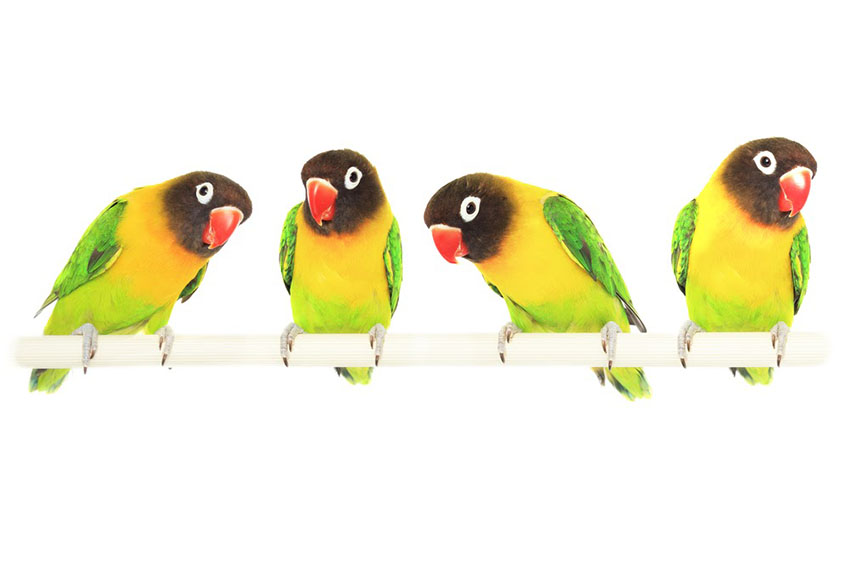What type of parrot are you looking for? There's a lot of variety - check out our list of commonly kept species in the Different Types of Parrot section of this guide as a starting point.
Do you want something small, or medium sized, or a bit bigger? Something easy to look after, something friendly, something that mixes well with other birds? Or perhaps one of the largest species, which tend to be a bit more challenging?
Once you've pinpointed a potential parrot purchase, spend time watching the bird (or birds), and give them a visual health-check.

Masked Lovebirds - pet birds should look in the prime of health
Signs of a Healthy Parrot
Healthy parrots should be wide awake in daylight, alert and interested in their surroundings, with their feathers neat and close to the body (rather than fluffed up). Their eyes should be bright, and they should have lots to say for themselves (even if this is all whistles and squawks rather than words). That poor parrot alone and asleep in the corner with the messy, ruffled feathers, crusty beak and dirty vent, isn’t one of the healthy ones.
Equally important, the bully making the other birds’ lives a misery isn’t the ideal addition to a mixed aviary, if that’s your intention. Not all parrot species mix well with others – in fact, this is the rule rather than the exception. Larger birds will bully their smaller cousins, and some small birds such as lovebirds can, in spite of their names, make life hell for less aggressive species such as budgies and cockatiels. Always ask the breeder or shop for advice if you want to mix and match your birds.

A good supplier will have healthy birds and lots of invaluable advice
It’s not always obvious what sex a given bird is, and with some species it requires an invasive examination or even a DNA test to find out if a chick is male or female. Absence of disease can be even harder to ascertain. Many breeders offer paperwork asserting a bird’s vet-signed bill of health. In the absence of this, ask for a guarantee, so that you can at least get your money back if the parrot turns out to have been ill, in spite of outward appearances.
Parrot Quarantine
Ask the seller questions. Where is it from? Does it have a vet's bill of health? If it wasn't hatched here, where was it hatched, and how long has it been kept in captivity? Is it accustomed to humans and acclimatized to the local weather? Has it spent time with other parrots, and has it ever been outdoors (or, indeed, indoors, if you're viewing parrots in an outdoor enclosure)?
If you are introducing your new parrot to existing birds at home, quarantine is advisable, to make sure the newcomer doesn't have a hidden illness. A period of 35 days is standard.
Comments
There are no comments just yet